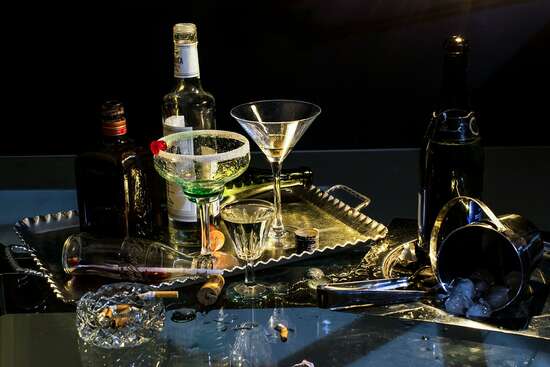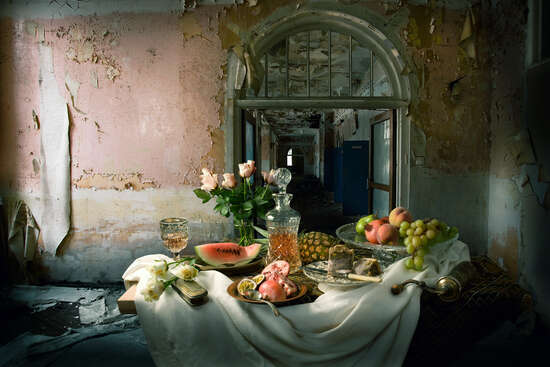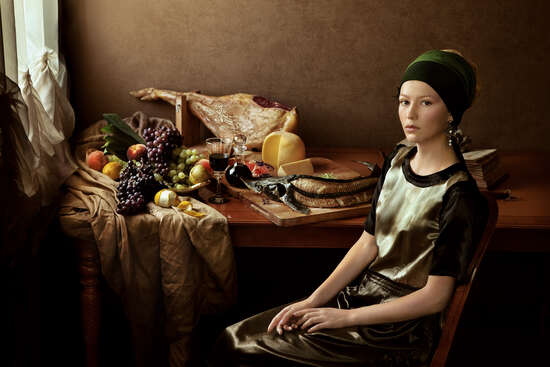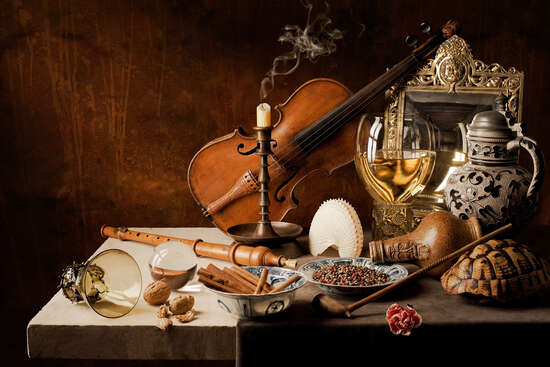PRÊT À ACCROCHER
Toutes les œuvres d'art LUMAS peuvent être accrochées très facilement après le déballage.
EMBALLÉ EN TOUTE SÉCURITÉ
Les emballages des usines LUMAS répondent toujours aux normes les plus strictes, afin de garantir que tout arrive chez toi en aussi bon état qu'il a été expédié.
SOUTIENT LES ARTISTES
Avec chacun de tes achats LUMAS, l'artiste reçoit une commission équitable.
14 JOURS DE DROIT DE RETOUR
Retour facile sous 14 jours pour s'assurer que vous êtes satisfait de chaque achat.
INFORMATIONS SUR LE BAGROUND
“Everything you see, I owe to spaghetti,” said legendary actress Sophia Loren. Italian photographer Dan Bannino has transformed such statements into true works of art. Bannino examines the curious eating habits of the rich and famous, turning them into artistic still-lifes.
His elaborately composed photographs are reminiscent of paintings by the old masters, appearing like scenes from centuries past. At the same time, they reference our fascination with superstars and their ideas of good eating. In Bannino’s work, Sophia Loren’s table looks entirely different from Kate Moss’s, the British supermodel purportedly subsisting on a “Hollywood Diet” of cocktails and cigarettes.
In Still Diets, Dan Bannino not only looks into the glamorous lives of celebrities, he also demonstrates the public’s interest in them. He demonstrates how the stars’ dietary routines are practically anchored in the realm of common knowledge.
Using the visual vocabulary of the old masters, Bannino spreads the phenomena out over multiple centuries. His still-lifes evoke associations with the lavishly laid tables of kings and nobles, with red wine, opulent fruit arrangements, and golden loaves of bread. Apparently, the public has always been fascinated by what the rich and famous eat. Dan Bannino says, “I wanted to make it clear that this curiosity from the 15th century hasn’t changed a bit.”VITA
Dan Bannino was born in Italy in 1988. After spending a few years on a photography contract in London, he went freelance in 2014. Bannino’s work quickly attracted international attention and has been featured in magazines including National Geographic, The Times, Harper’s Bazaar, and Elle. He lives and works in Turin.INTERVIEW
How did you get started with photography?
I come from a family of photographers. When I was little, my father had his darkroom at home, my mother worked as a developer in a photo studio, and my uncle was also a professional photographer. Six years ago, I moved to London to become a full time photographer. After a few random gigs, I ended up working as a product photographer for a research company, shooting mainly food. During those years, dealing with the most bizarre edible things, I developed a fascination for this topic, something that helped me to see my daily meals or food shopping from another perspective.
Where do you find inspiration?
Old masters’ paintings are always the main source of my inspiration, especially Caravaggio. I was born in Italy, so mixing the ancient art history that always surrounded me with the pop and neon-colored world from television – and then later from the internet – is somehow natural. I also like to spend a lot of time visiting exhibitions because I’m a huge art lover. Inspiration for the next photo can be just around the corner.
What would you like to achieve with your artworks?
As in the 15th century, the decorative abundance is still allusive to the theme of the ephemerality of life. I want to make people stop and look at these tables, attracted by the redundancy of objects or maybe by the colors and lighting, then surprise them once they’ve discovered the story and characters behind my artworks. My hope is to achieve a mash-up of old and new, baroque and modern.








 Non merci, j'aimerais rester sur cette page.
Non merci, j'aimerais rester sur cette page. Oui, je souhaiterais changer.
Oui, je souhaiterais changer.